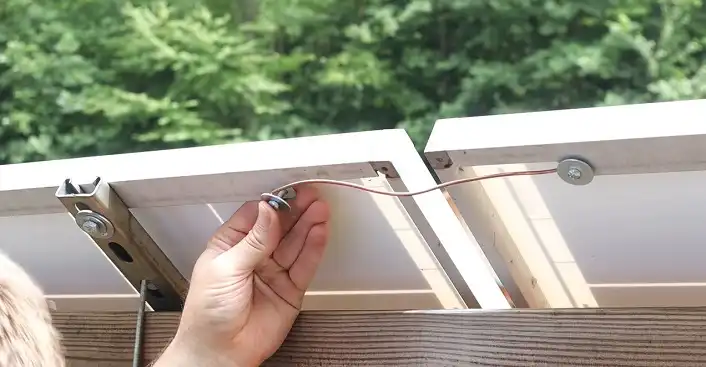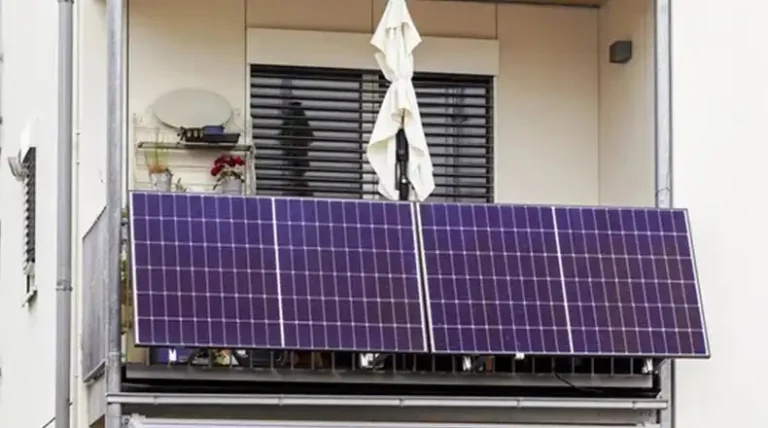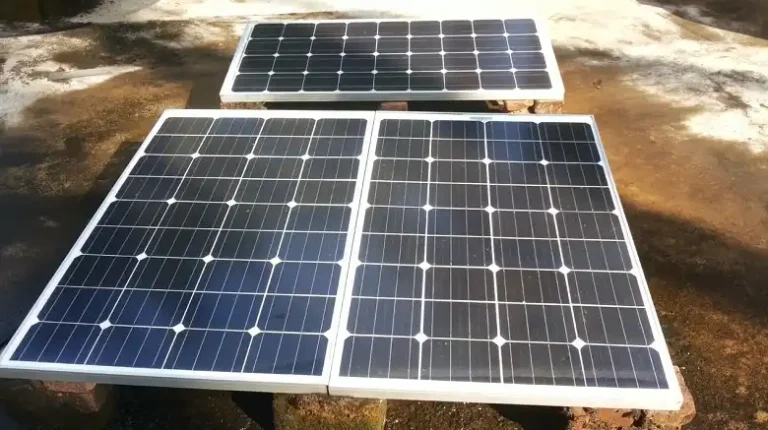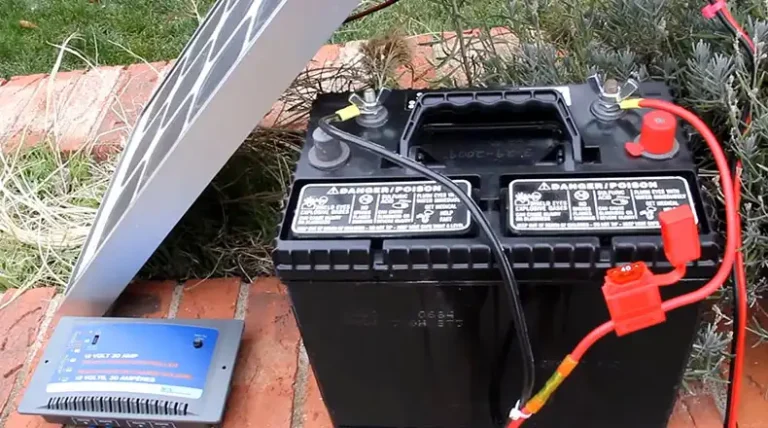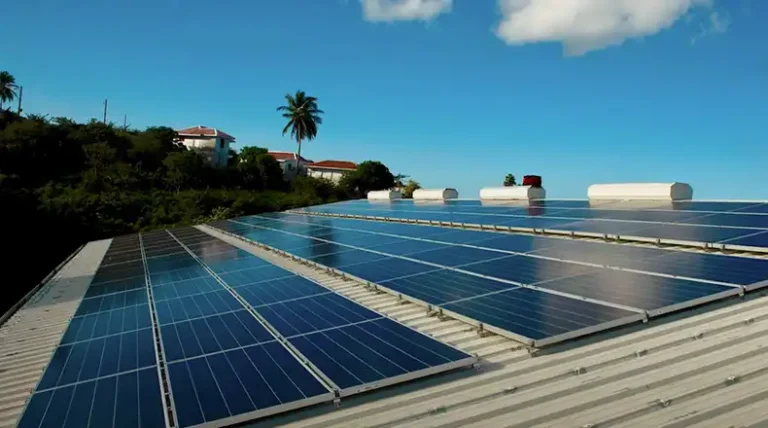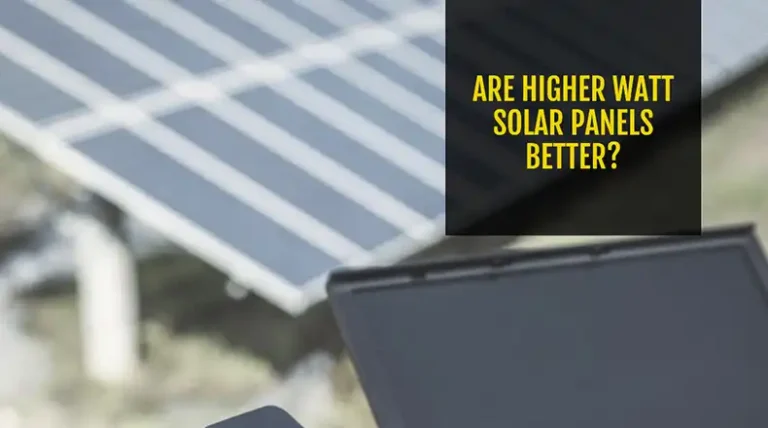Can Solar Panels Produce 240 Volts? Explained
One of the common questions that often arises among solar users is whether these solar systems can generate enough voltage to power their electrical needs effectively.
The short answer is yes, solar panels can indeed produce 240 volts, which is the standard voltage required for most household and commercial applications in many countries.
In this guide, I’ll help you explore the functionalities of solar panel’s voltage production, the factors that influence it, and other valuable insights to make an informed decision about adopting this sustainable technology.
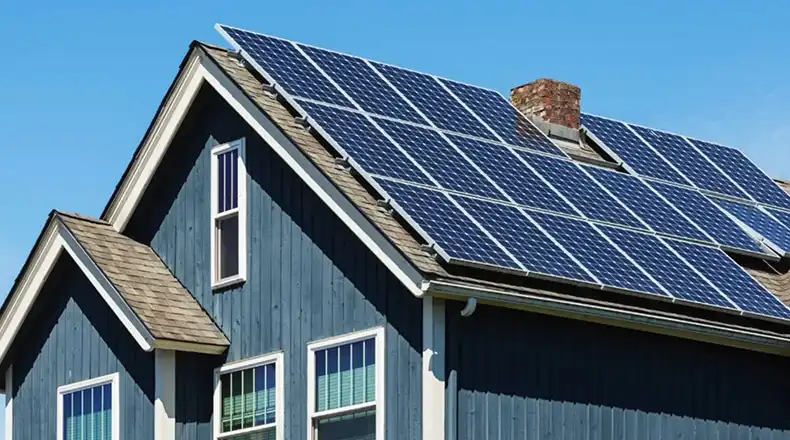
What Is the Typical Voltage Production of Solar Panels?
Solar panels are designed to generate direct current (DC) electricity, which is then converted into alternating current (AC) through an inverter to power your home or business. The voltage produced by a single solar panel, known as the open-circuit voltage (Voc), typically ranges from 30 to 40 volts, depending on the panel’s specifications and environmental conditions.
However, to achieve the desired voltage output of 240 volts, multiple solar panels are connected in series, forming a solar array. By linking these panels together, their individual voltages add up, enabling the system to reach the required voltage level.
How 240 Volts Is Produced by Solar Panels
Solar panels are pretty amazing pieces of technology. They work by converting sunlight into electricity through a process called the photovoltaic effect. When sunlight hits the solar cells in a panel, it knocks electrons loose from their atoms. These electrons then flow through the material to produce an electric current.
The voltage produced by a single solar cell is typically quite low, usually around 0.5 to 0.6 volts. But here’s the cool part – solar panels combine multiple cells in series to increase the voltage.
Common Panel Configurations
Let’s break down some common panel configurations and their voltage outputs:
- 36-cell panels: These produce a maximum voltage of about 18 volts.
- 60-cell panels: These can generate up to 30 volts.
- 72-cell panels: These typically produce around 36 volts.
- Cut-cell panels: With 120 or 144 cells, these can produce even higher voltages.
Let’s do some quick math:
- If a single cell produces 0.5 volts, a 36-cell panel would indeed produce 18 volts (36 * 0.5 = 18).
- For a 60-cell panel, we’d get 30 volts (60 * 0.5 = 30).
- A 72-cell panel would produce 36 volts (72 * 0.5 = 36).
For running home appliances, you will require around 16 to 25 solar panels. Let’s say, you have 20 solar panels. Now let’s calculate the amount of voltage your solar panels will produce.
- If you have 36-cell panels, it will produce (18 * 20 = 360V
- For a 60-cell panel, we’d get (30 * 20 = 600V).
- A 72-cell panel would produce (36 * 20 = 720V).
It’s important to note that these are maximum voltages under ideal conditions. The actual voltage can vary based on factors like sunlight intensity, temperature, and shading.
Designing a 240-Volt Solar System
To achieve a 240-volt output from a solar panel system, careful design and component selection are necessary. Here are the key steps while selecting an inverter for your solar panel system:
- Selecting the Right Solar Panels: Choose solar panels with a suitable voltage rating that, when combined in series, can reach the desired 240-volt output. Ensure that the inverter is compatible with the voltage and power output of your solar array, taking into account potential future expansions. Consider factors like panel efficiency, temperature coefficients, and brand reputation.
- Calculating the Number of Panels: Determine the number of solar panels required to achieve the desired voltage output. This calculation involves dividing the target voltage (240 volts) by the individual panel’s open-circuit voltage (Voc) rating.
- Configuring the Solar Array: Connect the calculated number of solar panels in series to form a solar array, ensuring proper wiring and cable sizing to minimize voltage drops. Higher-efficiency inverters can maximize the energy output from your solar panels, reducing energy losses during the conversion process.
- Incorporating an Inverter: Install a grid-tie inverter that can convert the DC voltage from the solar array into 240-volt AC power, suitable for household or commercial use.
- Safety Features: Look for inverters with built-in safety features, such as ground fault protection and anti-islanding capabilities, to ensure safe operation.
- System Monitoring and Maintenance: Regularly monitor the system’s performance and conduct routine maintenance to ensure optimal voltage output and overall efficiency. Some inverters come with built-in monitoring systems or the ability to connect to external monitoring devices, allowing you to track the performance of your solar system.
By incorporating a suitable inverter into your solar panel system, you can effectively convert the DC electricity generated by the panels into the 240-volt AC power required for household and commercial applications. This crucial component ensures that the energy produced by your solar panels can be seamlessly integrated into your electrical system, providing a reliable and sustainable source of power.
Factors that Affect Solar Panel Voltage Output
While solar panels are capable of producing 240 volts, several factors can influence their voltage output. Understanding these variables is crucial for optimizing system performance and ensuring efficient energy generation.
1. Panel Specifications
Different solar panel models have varying voltage ratings, which are determined by the manufacturer’s design and the number of solar cells within the panel. Higher-quality panels tend to have higher voltage outputs, but they also come with a higher price tag.
2. Temperature
Temperature plays a significant role in solar panel voltage production. As temperatures rise, the voltage output of solar panels decreases slightly due to the inherent properties of the semiconductor materials used in their construction. Conversely, cooler temperatures can lead to higher voltage outputs.
3. Shading and Orientation
Partial shading or improper orientation of solar panels can significantly reduce their voltage output. Even a small portion of a panel being shaded can impact the overall performance of the entire solar array. Proper panel positioning and minimizing shading are crucial for maximizing voltage generation.
4. Electrical Losses
Voltage losses can occur due to factors such as resistance in the wiring, interconnections, and other components of the solar system. These losses can reduce the overall voltage output, so it’s essential to design the system with minimal electrical resistance.
Benefits of a 240-Volt Solar System
Investing in a 240-volt solar system offers numerous advantages, including:
- Energy Savings: By generating your own electricity from the sun, you can significantly reduce your reliance on utility companies and lower your monthly energy bills.
- Environmental Impact: Solar energy is a clean and renewable source of power, helping to reduce your carbon footprint and contribute to a more sustainable future.
- Increased Property Value: Installing a solar panel system can potentially increase the value of your property, making it more attractive to potential buyers or renters.
- Incentives and Rebates: Many governments and utilities offer incentives, tax credits, or rebates for homeowners and businesses that adopt solar energy, making the initial investment more financially feasible.
Endnotes
Solar panels are indeed capable of producing 240 volts, the standard voltage required for most household and commercial applications. By understanding the factors that influence voltage output and designing an efficient solar system, homeowners and businesses can harness the power of the sun while reducing their environmental impact and energy costs. If you have any further questions or need clarification on solar panel voltage production, feel free to leave a comment below. We’ll be happy to assist you on your journey towards embracing sustainable energy solutions. Thank you for reading, and we wish you the best in your solar energy endeavors!
FAQs
What Is The Minimum Number Of Solar Panels Needed For 240 Volts?
The minimum number of solar panels required to achieve a 240-volt output depends on the individual panel’s open-circuit voltage (Voc) rating. Typically, you would need at least 6 to 8 standard 60-cell solar panels connected in series to reach 240 volts.
Do Solar Panels Produce AC Or DC Voltage?
Solar panels generate direct current (DC) voltage, which needs to be converted to alternating current (AC) using an inverter before it can be used in most household and commercial applications.
How Does Temperature Affect Solar Panel Voltage Output?
Higher temperatures tend to slightly decrease the voltage output of solar panels, while cooler temperatures can lead to higher voltage outputs. This is due to the inherent properties of the semiconductor materials used in solar panel construction.
Can Shading Affect The Voltage Output Of Solar Panels?
Yes, shading can significantly impact the voltage output of solar panels. Even partial shading on a single panel can reduce the overall performance of the entire solar array, as the panels are connected in series.
What Is The Typical Open-Circuit Voltage (Voc) Range For A Single Solar Panel?
The open-circuit voltage (Voc) for a single solar panel typically ranges from 30 to 40 volts, depending on the panel’s specifications and environmental conditions.

